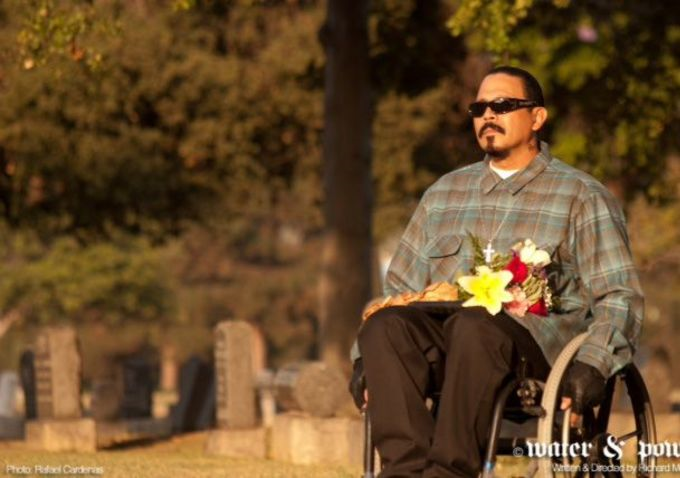The story dramatically unfolds with a border crossing. The coyotes successfully complete the crossing with three different families. The family members on this side of the border meet the coyotes with the remainder of the fee for delivering their loved ones. However, Maya’s sister did not have the balance due and the coyote took Maya away. The two coyotes actually flip a coin to see who gets to keep her. Maya was cunning and escapes the grasp of the coyote and is reunited with her sister and her sister’s family. Bread and Roses was a surprise because a lot of the film’s dialogue was in Spanish. However, I think that the Spanish and English combination of dialogue made the film more interesting and believable. The combination of both languages could actually be how a bilingual person may interact in their daily life as they interact with family members, at work and other English and non- English speaking persons. Maya’s sister finds her a job in a bar but Maya does not stay because the men were touching and grabbing her. Maya is hired on at her sister’s janitorial job. The manager gives her a job in exchange for her first month’s salary. This is only one of the manager’s offenses. There are others in the film.
A union organizer comes to the building where they work and speaks to the employees about organizing for more pay, health benefits and other worker rights. Most of the workers are afraid because they have seen people fired without cause. Maya is very interested and encourages the other worker’s to listen and eventually participate in work actions. The manager uses coercion to determine who is involved with the meetings. He dismisses several of the employees and bring in a new crew. Maya is the main character that drives the plot and she falls for the white union organizer. Maya does not understand why her sister is not participating especially since her family is in desperate need of health care. The answer is eventually revealed. In addition to her reasons for not participating in the work actions, Maya’s sister eventually reveals the real sacrifices she has made in coming to America and the sacrifices she has made for her family in Mexico. Maya is shocked by the reveal and makes a fatal mistake that puts her in deportation danger.
This film has a sense of realness as there are subtle instances that support the story such as the janitorial workforce. Though the employees are primarily immigrants, there are also black employees which are realistically part of this low- wage sector.
There are some revealing moments and the viewer is exposed to the tragic events of an immigrant’s life. Those moments include the border crossing with coyotes, the unfair work practices that non- unionized employees experience such as low wages and lack of health care. These employees also experience public humiliation brought on by the employer including the fear of losing their job. Also mentioned is how hard some immigrants work and send all their money back home. All of these moments and more are brought out in this film.
This film reminds me of Real Women Have Curves because it is the reversal of the stereotypical immigrant story. The protagonist is not helpless or a sex symbol. She is resourceful and an activist for her rights and the rights of others. However, as stated in the article, Who exactly is Living La Vida Loca? The Legal and Political Consequences of Latino/Latina Ethnic and Racial Stereotypes in Film and Other Media, “the white man rises to power” in this instance he is the union organizer and the Latina protagonist falls in love with him.


 Hello,
Hello,